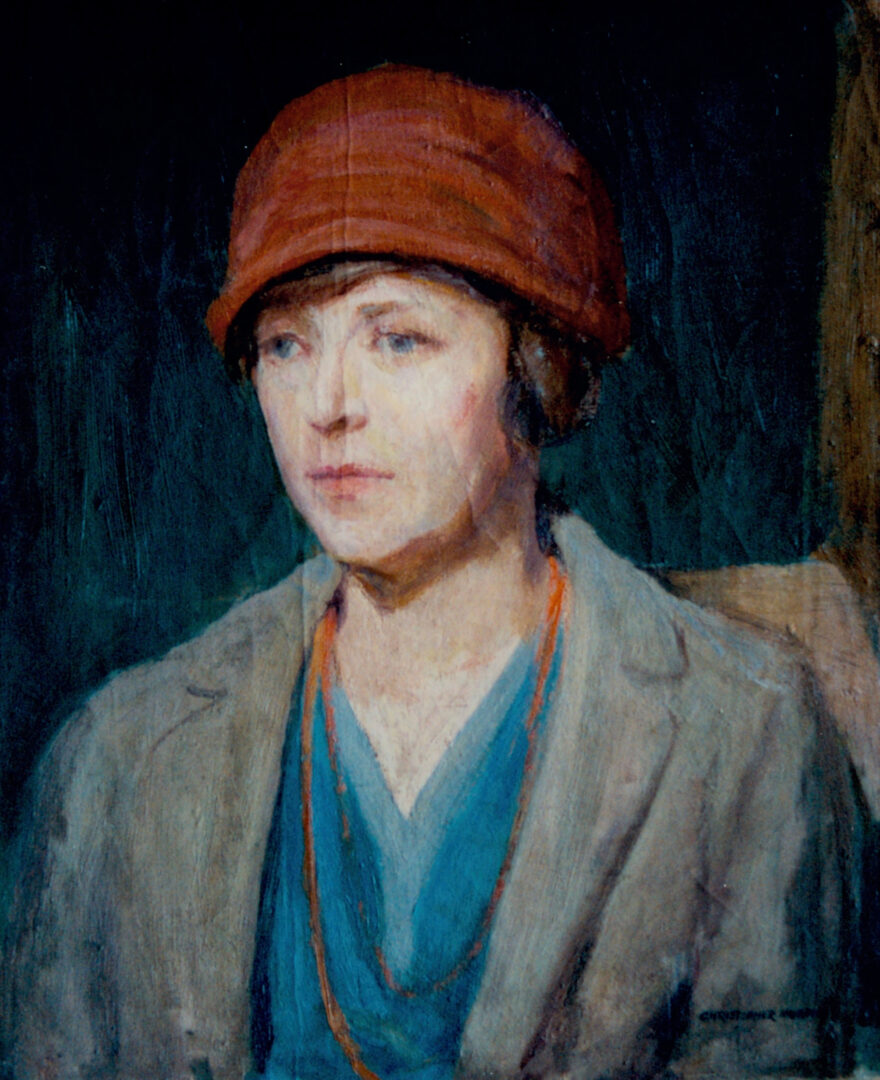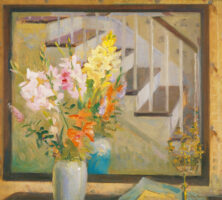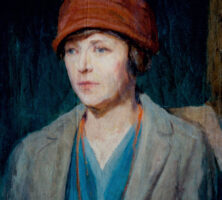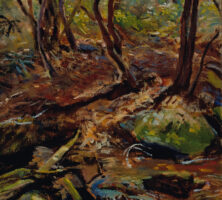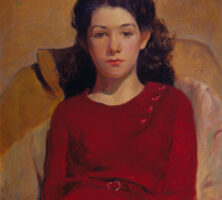For much of the twentieth century, Hattie Saussy was closely associated with the art community of Savannah, whose fledgling art organizations she supported and led. She also studied and traveled extensively outside the region as a young adult, seeking to perfect her impressionistic style of painting. Throughout her life, Saussy faced formidable obstacles—including blindness in one eye from a childhood accident, the outbreak of World War I (1917-18) while residing in Europe, and a broken hip in her senior years—but none seriously hindered her career or dampened her ambitions.
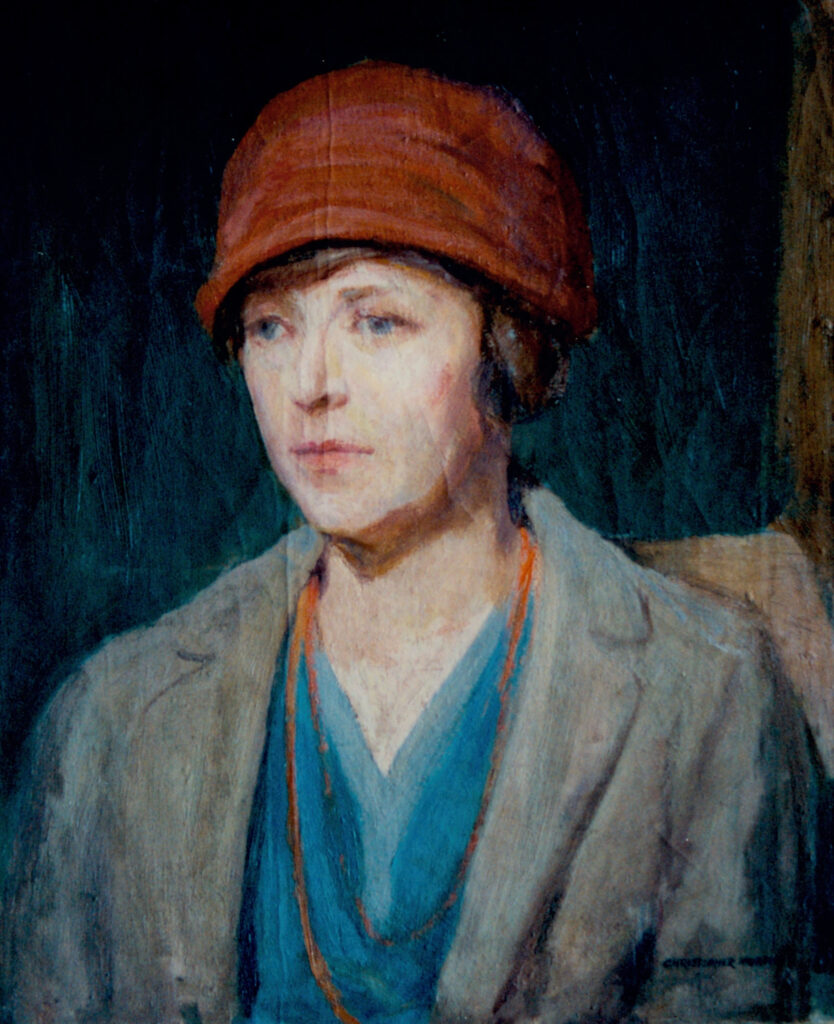
Courtesy of Morris Museum of Art
Born in Savannah on March 17, 1890, to Rachel Louise Shivers and Joachim Radcliffe Saussy III, Hattie Saussy was the only child of her parents to live to an advanced age. She attended public school in Savannah and was in fifth grade when art instruction was introduced into the curriculum by painter Lila Cabaniss. These art classes were supplemented with private lessons from Mrs. G. A. Wilkins and her daughter, Emma Cheves Wilkins. Additionally, Saussy used plaster casts taken from antique sculpture and impressionist paintings in the collection of the Telfair Academy of Arts and Sciences (later Telfair Museums) as source material to copy and perfect her technique.
Saussy left Savannah after high school to attend Mary Baldwin Seminary (later Mary Baldwin College) in Staunton, Virginia. She attended classes in both life drawing and plein air painting, which she especially enjoyed. The latter instilled a lifelong passion for landscape painting. During Saussy’s year in Virginia, her work was chosen for exhibition at the Jamestown Tercentennial Exposition.
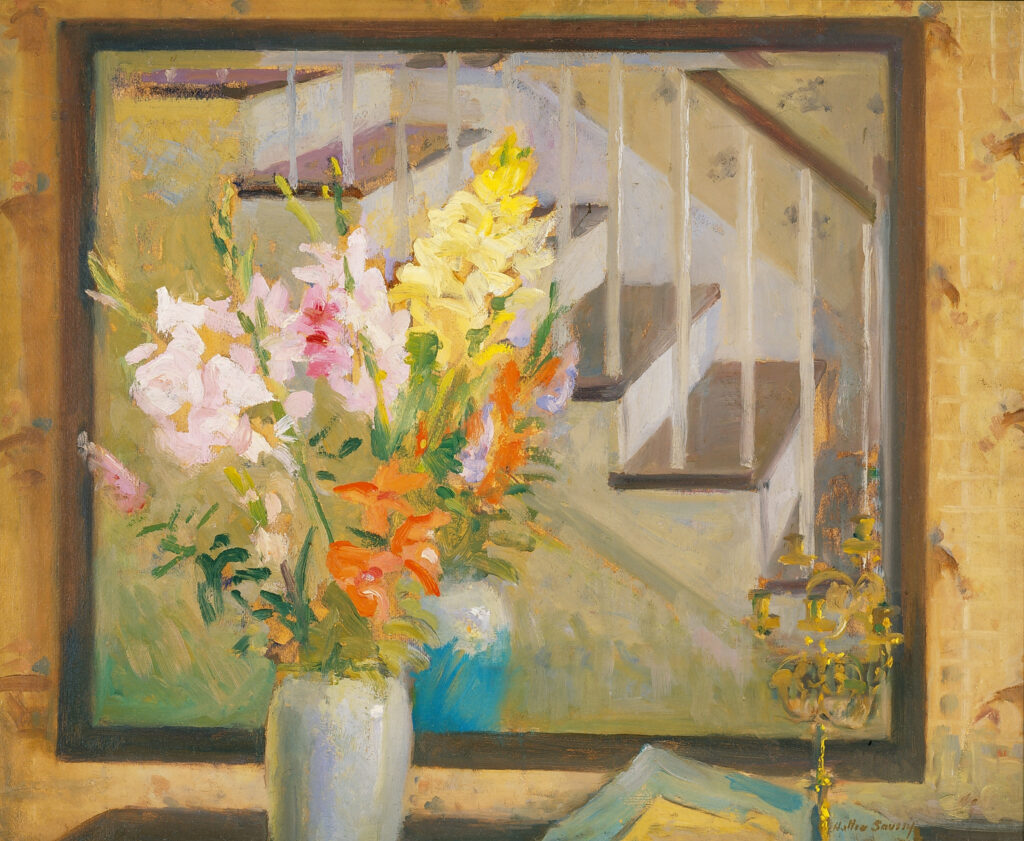
Courtesy of Morris Museum of Art
During the next four years (1908-12), Saussy lived with her widowed mother in New York City. She studied at the New York School of Fine and Applied Art (later the Parsons School for Design), the National Academy of Design, and the Art Students League. Her teachers during this period included Rae Sloan Bredin, George Bridgman, Frank Vincent DuMond, Eliot O’Hara, and Eugene Speicher.
Saussy and her mother left for Europe in 1913 and remained there until World War I began on the continent the following year. During her time there, she studied in Paris, France, with E. A. Taylor and traveled the continent, creating watercolor paintings and a few oils to document her travels. Upon her return to the United States, Saussy divided her time between Savannah and New York, and in 1915 she worked for the government in Washington, D.C., until the end of the war.
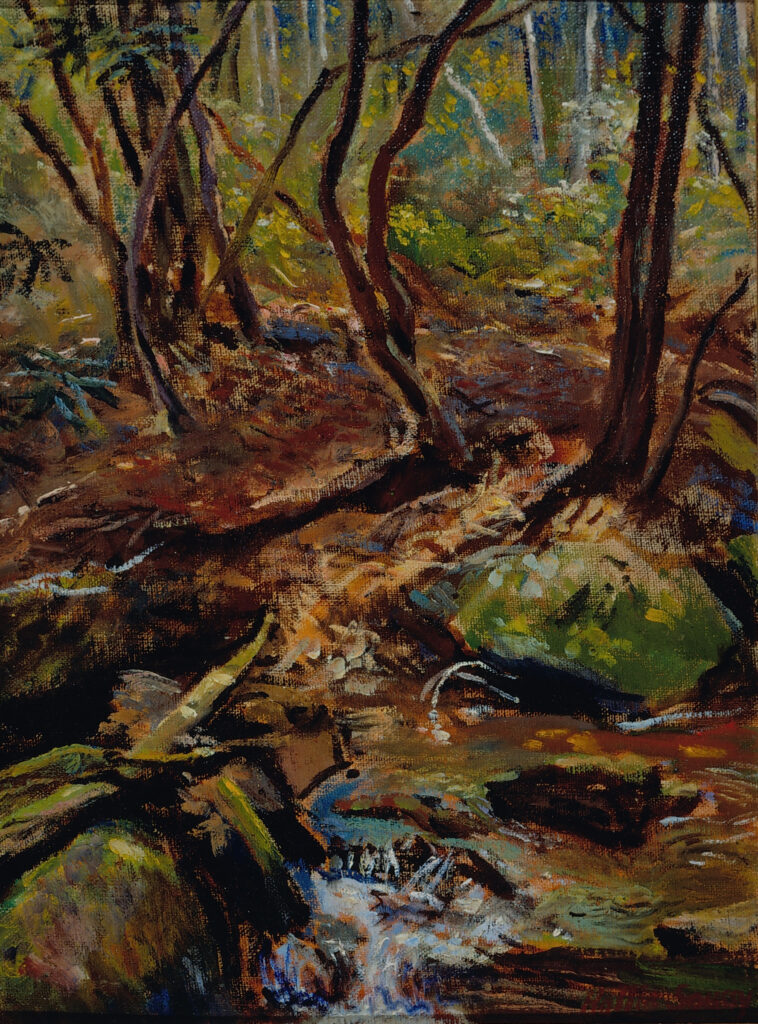
Courtesy of Morris Museum of Art
Saussy spent the remainder of her life in Savannah, except for one year (1920-21), when she taught at Chatham Episcopal Institute (later Chatham Hall) in Virginia. She was a member of the Savannah Art Association and served it in several leadership capacities. She was a founding member of the Association of Georgia Artists, serving as its president in 1933-34, and a member of the Southern States Art League, and her work was regularly exhibited with these organizations.
The artist painted portraits of family and friends but is better known for her sun-dappled landscapes, for which she traveled throughout the region to paint outdoors. During one such excursion in 1972 Saussy broke her hip, resulting in home confinement for the rest of her life. She died on January 13, 1978.
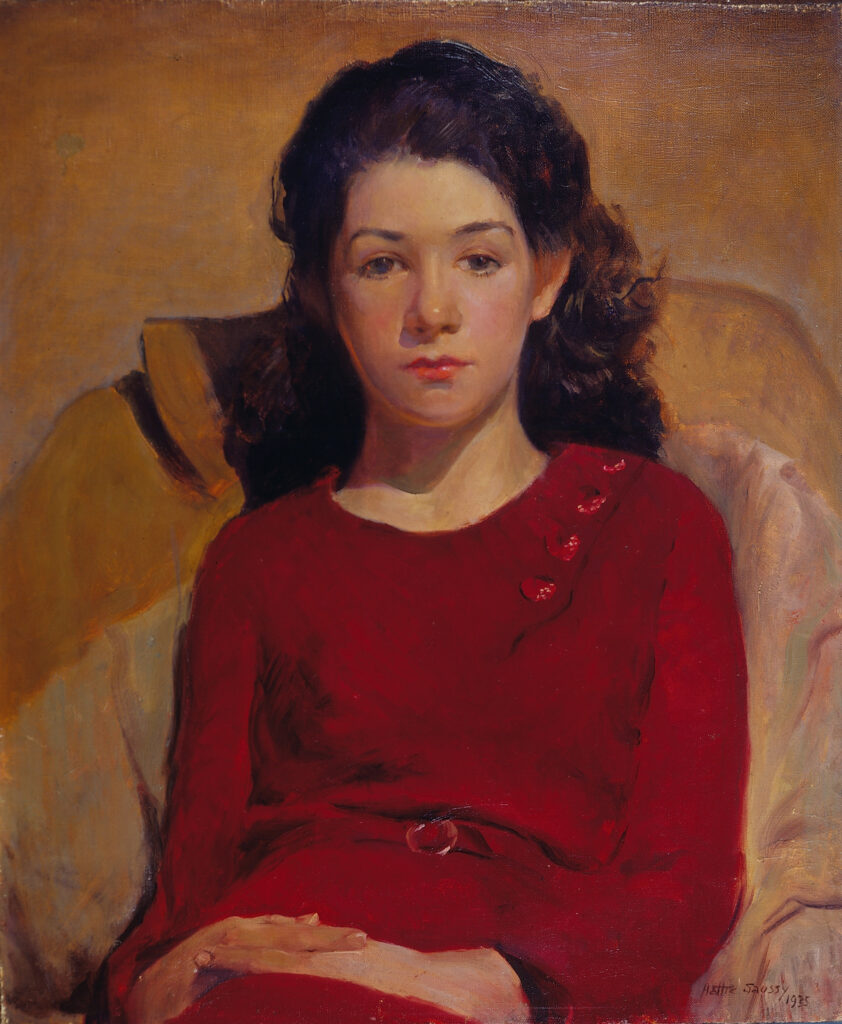
Courtesy of Morris Museum of Art
Saussy’s work is found in Georgia in the collections of the Columbus Museum in Columbus, the High Museum of Art in Atlanta, the Morris Museumof Art in Augusta, and the Telfair Museum of Art. Her work is also housed in South Carolina at the Columbia Museum of Art in Columbia and the Spartanburg Art Museum in Spartanburg, and at the Ogden Museum of Southern Art in New Orleans, Louisiana.






